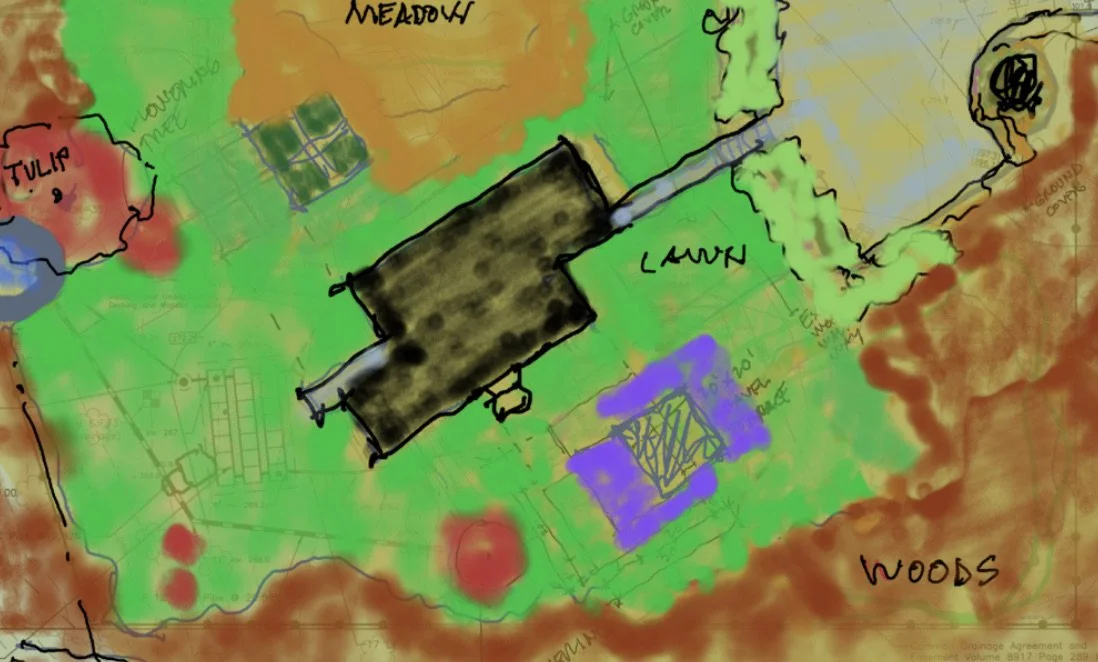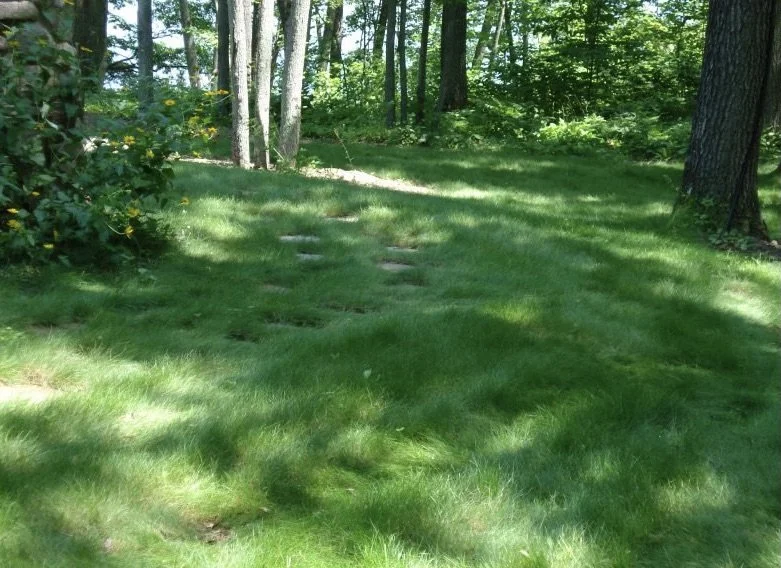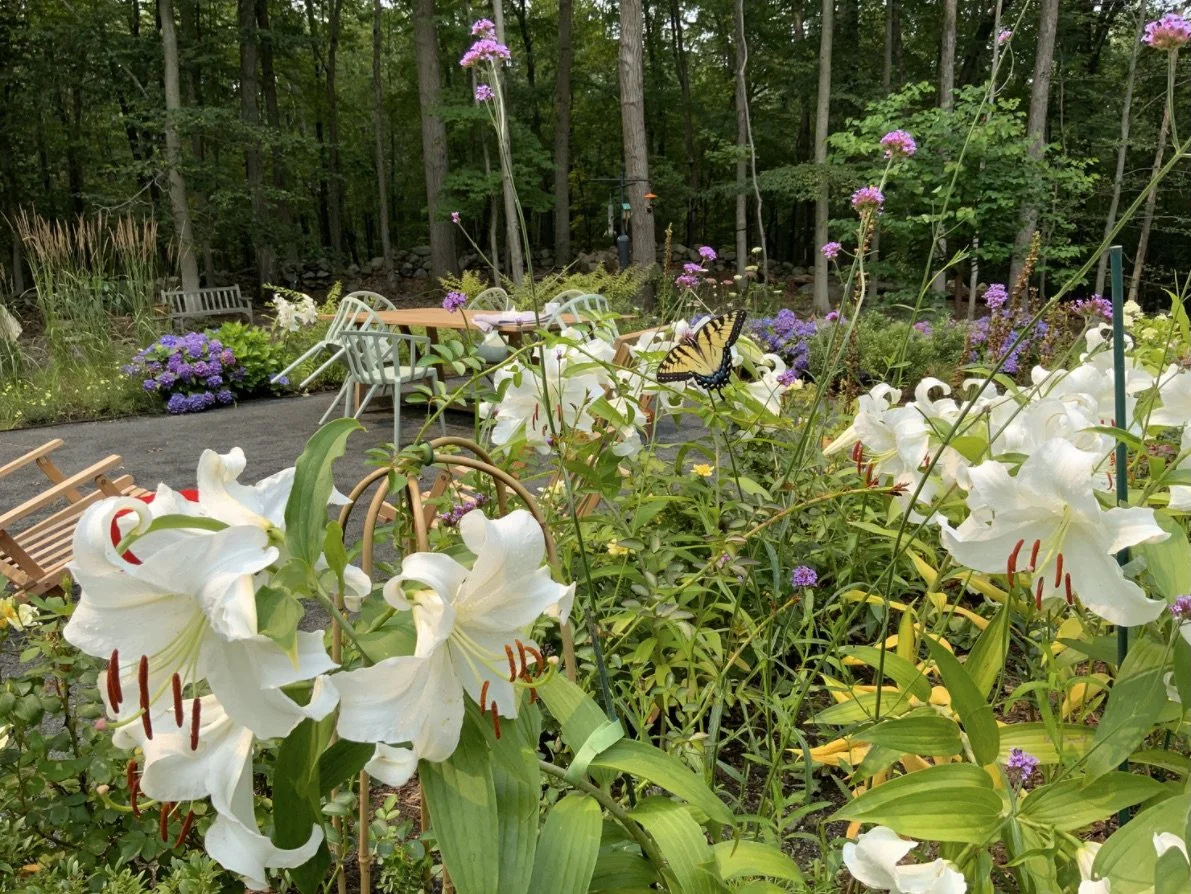Our Passive House: a Sustainable Landscape
My husband and I moved into the second house we designed together one year ago. Our house, a Passive House designed to be energy efficient and carbon free, just received an award from the United States Department of Energy for innovation in energy usage, air quality and comfort which was a wonderful validation of what we set out to do.
Our site plan includes a 40 foot hedge, lawn, meadow, flower and vegetable gardens.
Since July of last year, we have also been working on our site to provide an environment that promotes the health of insects and birds. As we are not landscape architects or naturalists, it took months of research and advice from friends and our landscape architect to establish and execute our design. Here are some of the choices we have made.
Sustainable lawn
I love lawns but no longer wanted a traditional high-maintenance lawn necessitating herbicides, frequent watering, and mowing. Our landscape architect encouraged us to plant a type of lawn that, once established, requires no water and mowing only once per year. This grass which is marketed under various names including “No-mow” and “Eco-Lawn”, consists of native, non-invasive european fescue grasses. Because no herbicides and fertilizers are being used, it has been extremely challenging keeping the weeds under control this year while growing the grass. But in the areas where it has been established the grasses form beautiful mounds of dark green that blow in the wind.
Our lawn requires no chemicals or watering and only needs to be cut once a year.
Meadow
My friend and colleague Katy gave me a beautiful gift of meadow mix as a housewarming gift. It was seeded last November, and it too is a work in progress but in several years will be self-sustaining and a food source for birds and insects.
Future meadow with vegetable boxes in the distance.
Hedge
Viburnum is a beautiful native alternative to traditional hedges such as privet and provides berries for birds and insects.
Our master site design includes a 40-foot-long hedge at the entrance. Because we are always on a budget, our initial thoughts were to use Privet. My friend Fiona, a spectacular native gardener, talked us out of it. Privet, it turns out, is one of thousands of invasive plants brought over the past one hundred years. Privet, when planted, will invade the surrounding landscape quickly choking out native plants that provide food sources for insects, birds and wildlife. Thanks to Fiona’s intervention, the future hedge now consists of Viburnum, which are not only native, but will provide berries and habitat for the hundreds of birds on the property.
Flower Garden: mixing natives and non-natives
Non-native Oriental Lilies are mixed with native plants such as Echinops, Culver’s Root and Phlox.
There are non-native flowers such as European roses and that I have in my garden. These flowers are not choking the forest undergrowth like the invasive Privet mentioned earlier, and because they bloom throughout the summer and fall, they provide a fantastic food source for bees, butterflies and other insects. We have combined these with native flowers, shrubs and grasses chosen specifically to facilitate polinating and to provide food for our birds through all four seasons.
Native Beauty Berry provides food for birds throughout the winter.
Our house was designed and built in two years. This landscape on the other hand, will take years to be fully realized and it will be a wonderful thing to look forward to.






